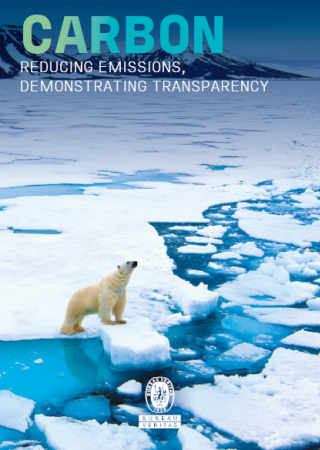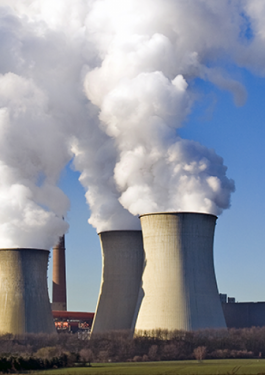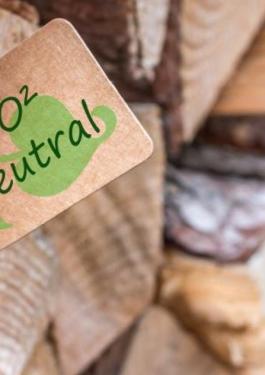The head of state of Vietnam, Vietnamese Prime Minister Pham Minh Chinh made a statement at a recent meeting of COP26 in Glasgow (England). He addressed that climate change is one of the biggest challenges facing humanity today and urged world leaders to step up and honor their commitments in the fight against climate change.
Storms, floods, and other forms of extreme, unpredictable weather are intensifying, claiming lives, and damaging homes. Air pollution today affects the health of tens of billions of people, and climate change is having devastating consequences for the world’s flora and fauna. It is now universally acknowledged that, in order to curtail, reverse and undo the impacts of climate change, countries and companies need to join forces and take radical action.
Mr. Pham Minh Chinh suggested that responding to climate change and restoring nature must become the highest priority in all development decisions, the highest ethical standard of all levels, industries, businesses, and people. "This warning of nature forces us to act strongly and without delay on a global scale," stressed Prime Minister Pham Minh Chinh.
Mr. Pham Minh Chinh has also emphasized that although Vietnam was still a developing country, having only begun to industrialize over the past three decades, it could still effectively tackle the issue of global warming using its own resources, with the cooperation and support of the international community, both in terms of finance and technology transfer, including the implementation of mechanisms under the Paris Agreement, to achieve the net-zero emissions by 2050.
Vietnam has also agreed to support a number of key statements and initiatives on forest protection, transition to renewable energy, adaptation support for local communities, and methane reduction.
COP26 TAKES THE HIGH ROAD
The United Nations’ 2021 Climate Change Conference (COP26) has been taken place in Glasgow ( England) from 31 October to 12 November 2021. The priority will be to complete and implement the Paris Agreement. This requires greenhouse gas (GHG) emissions reductions to secure global net-zero by 2050. Additionally, participants aim to finalize the Paris Rulebook, the detailed rules that make the Agreement operational.
At the heart of the Paris Agreement and its long-term goals are the nationally determined contributions (NDCs), specific climate actions committed to by each country. Ahead of the summit, all countries are expected to outline new emissions cuts from now until the intermediate milestone of 2030. Countries including the US, Japan, and Canada have already announced new NDC targets, but many fall short of the goal to limit global warming to 1.5°C. The US is pledging to cut emissions by 50-52% below 2005 levels, not quite hitting the 57-63% needed, while Japan is only targeting emissions cuts to 46% below 2013 levels, far from the required 60%.[1]
The summit will also look at ways to protect communities and natural habitats and take steps to ensure that developed countries uphold their promise to mobilize $100 billion in climate finance per year by 2020. The result of these ambitious aims will doubtless be the issue of new measures and regulations that will significantly impact businesses worldwide. For example, there are expectations that advances will be made toward an agreement on how to implement Article 6 of the Paris Agreement, which will affect carbon markets. This article allows for companies (and countries) to balance their carbon budgets by trading emissions reductions in order to reduce their emissions more efficiently.
THE ROLE OF COMPANIES IN COMBATTING CLIMATE CHANGE
Pre-empting the expected regulation to bring individual organizations in line with the national carbon reduction targets, more and more companies are pledging to help stop climate change by reducing their carbon[2] emissions as much as possible. The UN-backed Race to Net Zero campaign has been joined by over 3,000 businesses, with major new additions including Google, Microsoft, Apple, Pfizer, and ENGIE. Through various pledges, these companies vow to reach net-zero emissions as soon as possible, and by mid-century at the latest. They must submit an action plan within 12 months of joining, take immediate action to deliver on interim targets, and develop public, annual reports on their progress and actions.
However, despite their best intentions, many businesses find they cannot fully eliminate their emissions, or that they cannot lessen them as quickly as they would like. The net-zero challenge is even harder to achieve, as it requires businesses to make negative emissions. This means they must remove as much GHG from the air as they put into it—a tall order for some.
WHAT’S REQUIRED OF BUSINESSES
To limit business risk and ensure the success of climate change action, companies must align their business models with a net-zero economy, transitioning to models that create value for shareholders and stakeholders without adding GHGs to the atmosphere. This means formulating a coherent and applicable carbon reduction plan in response to the numerous governmental initiatives that will surely affect businesses worldwide.
The European Union (EU) Carbon Border Adjustment Mechanism (CBAM), for example, requires that EU importers either prove that the cost of their carbon emissions has been paid for externally or buy carbon certificates corresponding to the carbon price that would have been paid had goods been produced under the EU's carbon pricing rules. The CBAM aims to reduce the risk of carbon leakage by encouraging producers in non-EU countries to green their production processes.
For businesses, this means having to take a close look at emissions across the value chain. Companies should already start assessing which part of their supply chains may be exposed to government initiatives such as CBAM and ask their suppliers to improve their carbon accounting as well as reduce emissions where possible.
OFFSETTING UNAVOIDABLE EMISSIONS
Companies can offset their unavoidable emissions by purchasing carbon credits emitted by projects targeted at removing or reducing GHG in the atmosphere. Carbon credits are certificates representing quantities of greenhouse gases that have been kept out of the air or removed from it. While this system has been in place for decades, the voluntary market for carbon credits has grown significantly in recent years. McKinsey estimates that in 2020, buyers retired carbon credits for some 95 million tons of CO2 equivalent, more than double the amount bought in 2017[3]. As demand for carbon credits increases in response to growing regulation, the world will need a voluntary carbon market that is large, transparent, verifiable, and environmentally robust.
REPORTING AND VERIFYING SUSTAINABILITY PROGRESS
In a recent study conducted by Bureau Veritas, 82% of companies said that climate change reporting is important and 71% of respondents said that reducing GHG emissions is important to their organization. Thirty-six percent of companies carry out voluntary verification of their climate change reports.
Bureau Veritas verifies businesses’ data to a variety of voluntary standards and regulatory programs for carbon footprinting, including ISO 14064-1, GHG Protocol, and EU and the UK ETS.
Seventy-five percent of companies surveyed told Bureau Veritas that third-party verification of carbon offsets was important to their organization. It enables them to monitor, measure, and report on progress towards their sustainability objectives, reap the full reputational benefit offered, and prove their communications are accurate and transparent. Bureau Veritas’ Green Line suite of services was developed in response to this priority.
Our experts validate and verify carbon offsetting and removal projects to voluntary requirements including ISO 14064-2, Verified Carbon Standard, and the Gold Standard, as well as the UN’s Clean Development Mechanism, proving the legitimacy of carbon credits and helping companies achieve carbon neutral and net-zero operations.
Companies can obtain Bureau Veritas certification of the carbon reduction pathway with the Carbon Progress© labeling system or make certified carbon neutrality declarations following PAS 2060. These standards require that companies set carbon objectives, measure emissions reductions, and compensate for residual emissions. Bureau Veritas is an approved verifier for the Climate Bonds Initiative and can offer certification to green bond principles, helping businesses verify the positive impact of their investments.
SOURCES
[1] https://newclimate.org/wp-content/uploads/2021/05/CAT_2021-05-04_Briefing_Global-Update_Climate-Summit-Momentum.pdf
[2] Throughout this article, we use “carbon” to designate the basket of greenhouse gases introduced by the Kyoto Protocol: carbon dioxide, methane, nitrous oxide, and fluorinated gases.
[3] A blueprint for scaling voluntary carbon markets to meet the climate challenge, McKinsey, Jan 2021, p.3.




